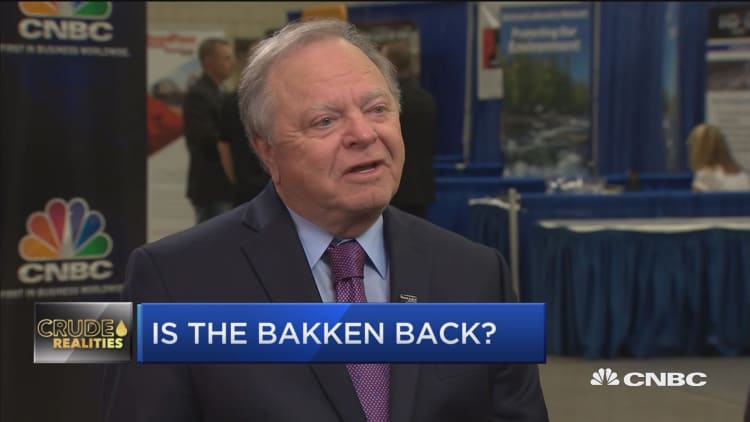
Oil prices were mixed on Wednesday after a surprise jump in U.S. crude stockpiles and following a report that OPEC could scale back its deal to limit oil production at its June meeting.
U.S. commercial crude inventories surged by 5.8 million barrels in the week through May 18.That surprised the market, which was expecting a decline based on earlier industry data and a weekly poll of analysts by Reuters.
"That big print on the crude number pretty much sunk the rally for now," said John Kilduff, founding partner at energy hedge fund Again Capital.
U.S. crude ended Wednesday's session down 36 cents at $71.84 a barrel. Brent crude futures were up 24 cents at $79.81 a barrel by 2:29 p.m. ET, rebounding from a brief slide after the EIA data.
U.S. crude oil exports dropped by more than 800,000 barrels a day last week to about 1.75 million barrels a day. Meanwhile, crude imports were up by 558,000 barrels and refiners produced less distillate fuel, which includes diesel and heating oil.
Gasoline stockpile levels also surprised the market by jumping 1.9 million barrels a day, while distillate inventories fell slightly less than expected.
Gasoline futures were down 1.5 percent at $2.2362 per gallon following the data release.
Preliminary EIA data on Wednesday showed U.S. output roughly unchanged at just more than 10.7 million barrels a day.
Oil prices have gained nearly 20 percent so far this year, with Brent briefly rising above $80, driven primarily by coordinated supply cuts by the Organization of the Petroleum Exporting Countries and partners including Russia.
OPEC may decide to raise oil output as soon as June due to worries over Iranian and Venezuelan supply and after Washington raised concerns the oil rally was going too far, OPEC and oil industry sources familiar with the discussions told Reuters.
The report is likely to have only a minimal impact on the market until a more influential voice like the Russian or Saudi oil minister weighs in on the prospect, said Kilduff.

"People are having a hard time taking them seriously about it for now, but definitely it's registering more with the market today," he said, adding, "Unnamed OPEC sources are only going to carry the day so far."
The United States plans to reimpose sanctions on major oil producer Iran, while an economic crisis has decimated Venezuela's crude output.
Based on the prospect of a shortfall in supply relative to demand, investors had driven their bets on a sustained rise in the price of oil to record highs earlier this year.
But with so much uncertainty over how sanctions might affect Iranian supply, fund managers have cut their holdings of crude futures and options by more than 10 percent in the last seven weeks to the lowest level this year.
"It does seem like any move above $80 attracts selling interest right now and that could potentially lead us to a period of consolidation, where I think $77.50 or even $75 might be in focus," Saxo Bank senior manager Ole Hansen said.
— Reuters contributed to this story.


